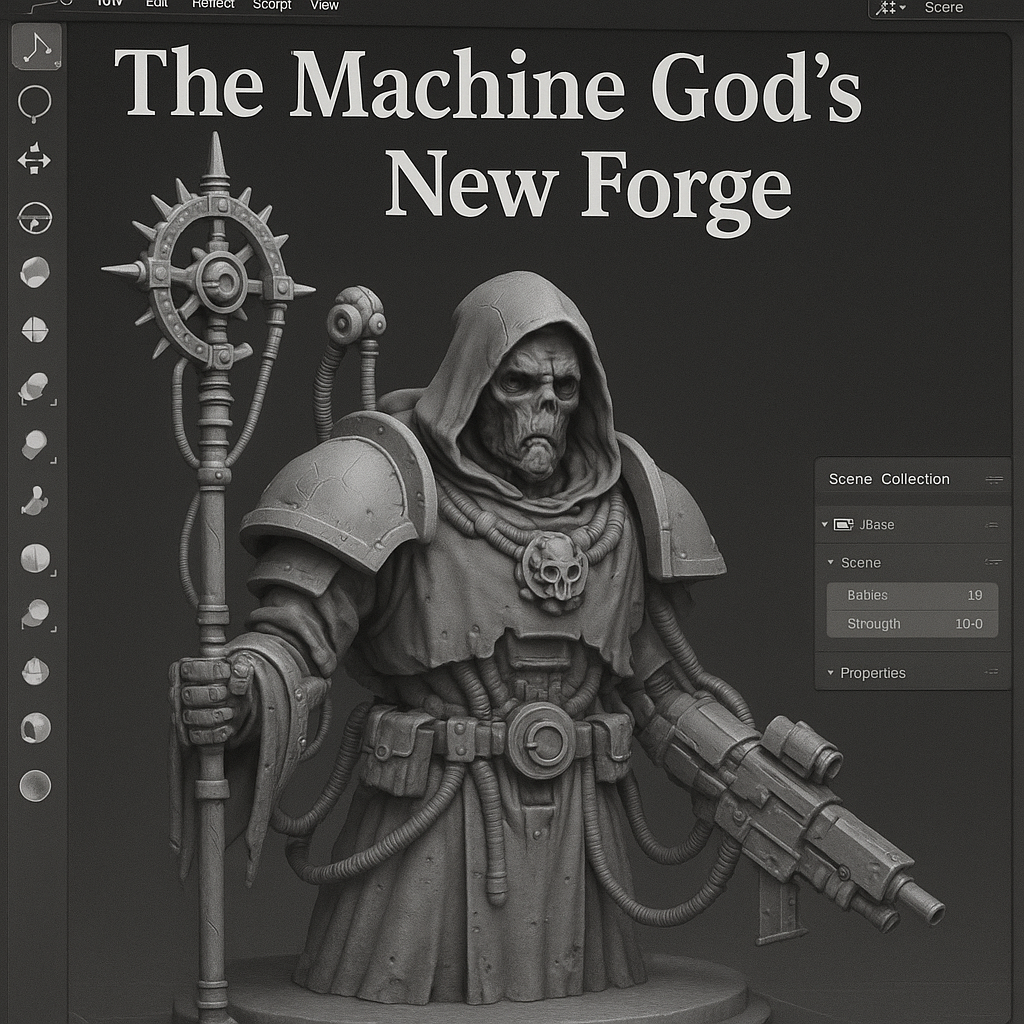Part I: The Legal War and the Battle for Imagination
Games Workshop has always lived in contradiction. It thrives on community yet patrols it like a fortress. It sells imagination but guards it like a dragon’s hoard. For decades, that tension was part of the theatre. Fans queued outside stores. Scarcity became status. Every new release felt like prophecy.
But the century changed, and so did the tools of creation.
The 2020s transformed plastic into data. When hundreds of Warhammer 40,000 model files escaped into the wild through STL leaks, the illusion of control shattered. The monopoly on miniatures no longer existed. You could print a Space Marine faster than a cease-and-desist letter could arrive.
For the first time, Games Workshop’s biggest competitor wasn’t another company. It was its own fans.
The Lawsuits: GW vs Ghamak
In early 2023, Games Workshop filed suit against Ghamak, an Italian sculptor known for intricate digital miniatures. This was no small skirmish. It was a statement.
The company accused Ghamak of unfair competition, arguing that the sculptor’s designs resembled Warhammer aesthetics too closely. Not identical, but too evocative. GW demanded that up to ninety percent of Ghamak’s catalogue be deleted and proposed a binding contract that would limit future output.
Ghamak refused.
In his public response, Francesco “Ghamak” Pitzo wrote:
“They wanted us to remove most of our catalogue without saying which parts they claimed ownership of. They accused us not of copying, but of competing unfairly. We tried to open a dialogue, but they refused. This is not just about us. It’s about every artist who creates alternatives or compatible models.”
The words hit the community like a dropped bolter shell. Within days, a crowdfunding campaign raised more than €8,000 for legal defence. On Bolter & Chainsword, a forum older than many fans themselves, threads erupted into hundreds of pages of outrage and support.
What started as a lawsuit became a referendum on creativity itself.
Unfair Competition: The Legal Mirage
Games Workshop’s argument didn’t rely on standard copyright claims. Instead, it invoked unfair competition — a broad, ambiguous doctrine.
Under this interpretation, even an original design can become “illegal” if it’s marketed as compatible with Warhammer. The accusation shifts from copying to competing, from theft to threat.
Legal analysts at Fandom Pulse and various law-focused YouTube channels have pointed out the danger of this precedent. If compatibility equals competition, then entire creative ecosystems vanish. Imagine Apple suing every third-party case manufacturer for describing their product as “for iPhone.”
This approach extends the battlefield from art theft to influence itself. It declares aesthetic proximity a potential crime.
And once you start policing proximity, where does originality end?
Community Outcry
Hobbyists are obsessive, tribal, and deeply emotional. They argue about the thickness of shoulder pads and the purity of lore. But when they sense injustice, they become unified fast.
The Ghamak case lit that fuse. Reddit threads exploded with outrage. Independent designers released solidarity statements. Others confessed to having received similar threats, some for models that bore only a passing resemblance to GW’s universe.
The anger wasn’t only about law. It was about identity. Fans felt betrayed by a company that had taught them to dream in miniature, only to punish them for doing it too well.
It is a strange moment when the faithful turn on their own god.
The Grey Zone of Influence
What makes the entire situation more complex is that Ghamak’s models, like many others, fit into multiple universes. They work in One Page Rules, Grimdark Future, Stargrave, and other tabletop systems.
In short, they are genre-compatible, not brand-specific. But because Warhammer defined the aesthetic of “grimdark,” anything that looks industrial, baroque, or militarised risks being branded as imitation.
That’s the paradox of influence. The more successful a style becomes, the less it belongs to its creator.
The Larger Crackdown
The Ghamak case was not an isolated act. In 2024, Games Workshop pursued over 160 global sellers for trademark and IP violations, many based in China but some small independent designers. Accounts were frozen. Assets seized.
Yes, some were recasters peddling illegal duplicates. But others were legitimate studios producing original, thematic sculpts. The lack of clear distinction blurred piracy with creativity.
To the community, it looked less like protection and more like consolidation. A pre-emptive strike on competition.
Inside corporate walls, it was probably described as “brand defence.” Outside, it looked like fear.
The Economic Logic
It would be naive to ignore the economics. Games Workshop generates roughly £440 million annually. Its profit margins hover near 30 percent. But the math behind 3D printing is brutal.
A resin printer costs less than a single army box. Free STL files circulate across forums faster than models can ship. The cost of entry for independent designers has collapsed. Every garage printer is a micro-factory outside GW’s control.
If even one percent of players switch to home printing, that represents millions in lost sales. From a defensive perspective, the lawsuits make sense. From a strategic one, they look like a tourniquet on a wound that needs surgery.
Because once the community realises it can create for itself, control becomes a memory.
GW’s Policy of Purity
Inside Warhammer World and official stores, no unofficial models are allowed. Not third-party weapons. Not 3D printed bases. Nothing.
That rule is partly aesthetic and partly legal. It protects the visual uniformity of Games Workshop’s brand. But it also provides legal ammunition. The company can claim that “compatible” products mislead customers, since unofficial models cannot be used in official spaces.
To players, it feels like exclusion. To executives, it feels like consistency. Both are correct.
The Human Cost
Behind every legal headline is a real creator. Francesco Pitzo, better known as Ghamak, started sculpting miniatures in 2002. His small team in Italy made models that balanced commercial ambition with artistry.
When Games Workshop’s lawyers arrived, they didn’t only threaten revenue. They threatened identity.
“They call it unfair competition, but what they are really doing is declaring war on creativity.”
For independent artists, this fear is personal. They don’t have corporate shields or legal teams. Just software, patrons, and passion.

Reflection
At its heart, this fight is not about legality. It is about authorship. Who gets to define a world once it has inspired others to build their own?
The irony is poetic. The company that writes about gods of machinery and heresy of creation now faces that heresy in real life.
The Machine God provides. The question is who deserves to pray at the altar.



No responses yet